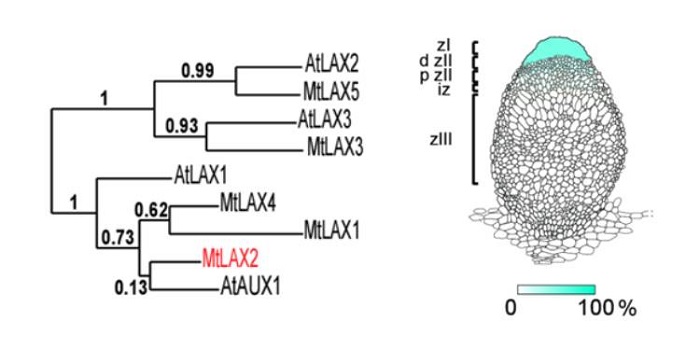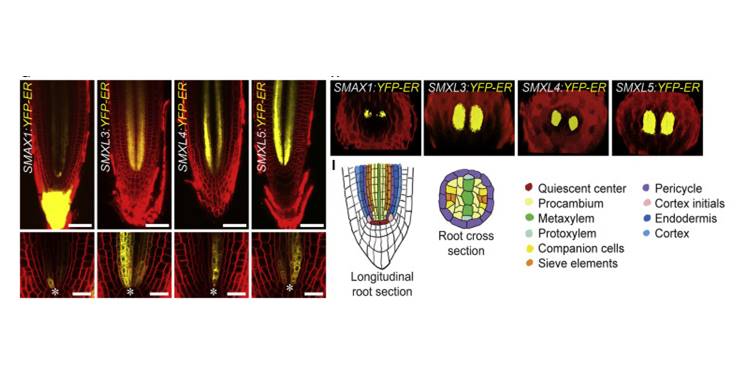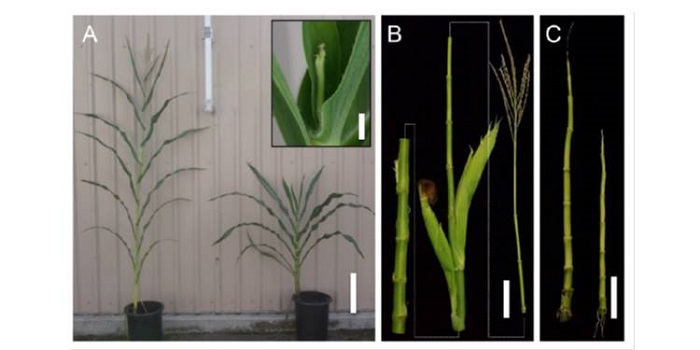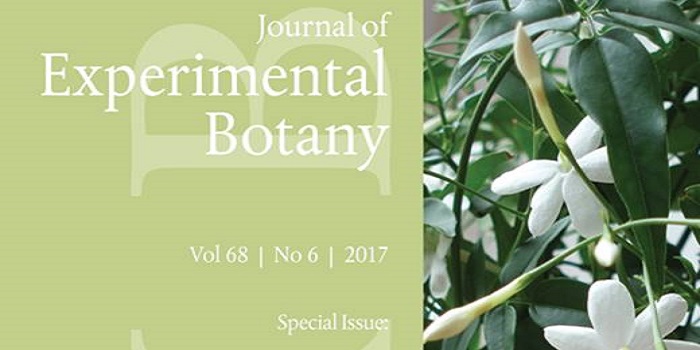
Towards an understanding of spiral patterning in the Sargassum muticum shoot apex
0 Comments
/
Classic studies of leaf placement (phyllotaxy) showed that two different mechanisms occur in land plants. In mosses, leaf placement is determined by the plane of cell division within the single apical cell, whereas in seed plants auxin acts as a morphogen that specifies leaf positioning. Linardić and…

TOPLESS mediates brassinosteroid control of shoot boundaries and root meristem development in Arabidopsis thaliana
Shoot and root development in Arabidopsis thaliana are controlled by many factors, one of which is brassinosteroid (BR) signaling. BR-responsive gene expression is controlled by the BES1 and BZR1 transcription factors. Using its EAR domain, BES1 binds to the transcriptional repressor TOPLESS (TPL)…

Vitamin B6 Is Essential for Maize Embryogenesis
Vitamin B6 is synthesized de novo in plants, fungi, archeae, and most eubacteria, but not in animals, including humans, which have to obtain it from dietary sources. Vitamin B6 is an essential cofactor for a range of biochemical reactions and a potent antioxidant. In plants, it plays important roles…

Meristem Doming and the Transition to Reproductive Development in Tomato
During vegetative growth, the shoot apical meristem (SAM) produces lateral organ primordia but remains roughly the same size, as WUSCHEL–CLAVATA signaling modulates the balance between cell division and differentiation. During the transition to reproductive growth in many species, the SAM expands in…

MtLAX2, a functional homologue of the auxin influx transporter AUX1, is required for nodule organogenesis
Nodules are specialized structures that form symbiotic, nitrogen-fixing associations with rhizobia on some plants including Medicago truncatula. Previous work has shown that auxin signalling is involved in nodule formation. Roy et al. extend this knowledge through the identification of a Medicago gene…

Strigolactone- and karrikin-independent SMXL proteins are central regulators of phloem formation
SMAX1 (SUPPRESSOR OF MAX2 1) was identified genetically as a suppressor of the enhanced seed dormancy phenotype of the max2 mutant, which is affected in both strigolactone (SL) and karrikin (KAR) responses (karrikins are smoke-derived germination promoters). SMAX1 is the founding member of an eight-member…

KNOTTED1 cofactors, BLH12 and BLH14, regulate internode patterning and vein anastomosis in maize
The maize shoot comprises modular domains of leaf, subtending shoot tissue, and an intercalary meristem that sits just above the next leaf down. By contrast to eudicot shoots that form a ring of vascular bundles, maize shoot vascular bundles remain as separate bundles, forming a “disordered” atactostele.…

Transcription factor interplay between LEAFY and APETALA1/ CAULIFLOWER during floral initiation
Several transcription-factor encoding genes involved in the transition from vegetative to reproductive growth have been identified. One of these, LEAFY (LFY), is expressed at the flanks of the inflorescence meristem at the site of newly forming floral meristems; loss-of-function lfy mutants produce leaves…

Special issue: Flowering of jasmonate research
Jasmonates are a family of compounds including jasmonic acid and its derivatives that regulate many plant processes from germination to defense. The Journal of Experimental Botany has a special issue on jasmonate research, which commemorates the advances in this field in the ten years since the JAZ proteins…

